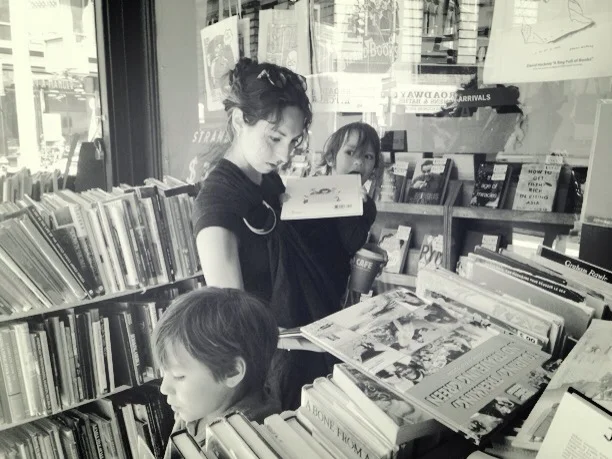INSPIRATION
Hettie Jones was the first mother who inspired me. I read her memoir, How I Became Hettie Jones, when I was a senior in high school. I read it, then re-read it once immediately, and then maybe a few times more that year, and then at least once or twice every year since, for the past seventeen years.
Hettie Jones is a writer (obviously) and the ex-wife of the poet LeRoi Jones, now known as Amiri Baraka. They were married in 1958, had two children in the early 60s, and then divorced in 1965. How I Became Hettie Jones tells the story of their marriage, which was, of course, truly remarkable for the time, occurring a decade before anti-miscegenation laws were deemed unconstitutional by the Supreme Court. The book also describes artistic Greenwich Village of the 1950s and 1960s: the lives and work of Hettie and LeRoi, as well as of the writers, painters, and musicians surrounding them, including some of the most famous names of the Beat Generation.
As a teenage girl living in the suburbs and craving sophistication, the subject matter of the book interested me greatly. I was of course a fan of the Beat writers, and I loved New York City in general and the Village in particular. Once I started reading, though, I found myself most captivated by the explicit femininity of the material. This was the first time that I had read a serious female writer who was interested in taking her femaleness seriously. Up to that point, I had not considered wifehood or motherhood or the female experience in general to be matters of serious interest to serious people. I'm not sure if this is because of old-school feminist attitudes that I had absorbed from my mother and the other Baby Boomer women who were the mothers and teachers of my childhood, or because of outright sexism built into my somewhat conventional education. Whatever the case may be, I had a firmly-held but largely subconscious belief that women were most interesting and valuable and smart when they were, in essence, "acting like men" - working, earning, achieving, etc.
Hettie Jones, in her one slim volume, entirely upended that belief for me. All honesty and no rancor, she exposes the attitudes, held in even the most "revolutionary" and "avant-garde" circles, that discounted the work, thoughts, feelings, and rights of women who dared to become girlfriends, wives, or mothers. And despite the brutal pervasiveness of these attitudes, she holds fast to her own understanding that womanhood as it is - rather than womanhood wrapped in a cloak of masculinity - can be a matter of interest, a subject of art. She shows, in short, that womanhood, the explicitly female experience, is worthy of attention. It matters.
As important as the ideas - integral to them, really - is the voice in which they are expressed. It is a voice the likes of which 17-year-old me had never encountered before, an unmistakably female voice, a voice that does not imitate or even really respond to any settled, male-dominated traditions. The voice is confident and clear, pliant and exploratory, loving and joyful. After many, many, many readings, the rhythms of Hettie Jones's voice have worked their way into mine: I am not sure if I can write a sentence, or even think a thought, that is uninfluenced by her. Hettie Jones was the first mother who inspired me, and she inspires me still.
So for the photos for my first Sling Diary, on the theme of Inspiration, I could think of no better place to turn than Hettie Jones. My kids and I, together with photographer and Metro Minis founder Bianca Fehn, hit the streets of Greenwich Village, where most of How I Became Hettie Jones takes place.
There is, incidentally, another way in which the streets of Greenwich Village represent inspiration for me. My father, Ralph Lee Smith, lived in the Village throughout the 1960s, playing folk music and writing. On our visits to New York when I was a child and then a teenager, my father would take me through the streets of the Village and tell me stories of the life he used to live there. He is the first artist I ever knew, and the first New Yorker. He's also the one who gave me How I Became Hettie Jones.
Accordingly, this first Sling Diary is dedicated to my father, Ralph Lee Smith, and to Hettie Jones, two people who have inspired me as woman, mother, writer, artist, and New Yorker.









